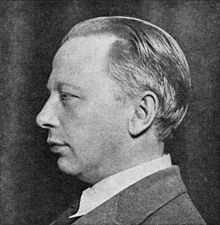Kurt Atterberg
(12 December 1887 – 15 February 1974)
Swedish composer and engineer. He is best known for his symphonies, operas, and ballets.
He cited the Russians, Brahms and Reger as his musical influences, and his works combine their
compositional styles with Swedish folk tunes.
Cello Concerto in C-minor, Op.21 (1922)
Mov.I. Andante cantabile - Allegro
Mov.II. Adagio 11:10
Mov.III. Allegro 21:17
Cello: Edmund Kurtz
Orchestra: Radioorkestern
Conductor: Georg Ludwig Jochum
Recorded in 1957
Piano Concerto in B flat minor
- Orchestra: Hannover Radio Philharmonic
- Conductor: Ari Rasilainen
- Soloist: Love Derwinger
- Year of recording: 2000
Piano Concerto in B flat minor, Op. 37, written between 1927-1936.
00:00 - I. Pesante allegro
13:19 - II. Andante
26:47 - III. Furioso
In this piano concerto by Swedish composer Kurt Atterberg, the choice of key already signals the ambition connected with the work and points to the corresponding Piano Concerto Op. 23 by Tchaikovsky from 1874-1875; this concerto also served as a point of reference, at least in outline, for the piano concertos of Robert Fuchs (1880), Wilhelm Stenhammar (1893) and Felix von Rath (1901).
Atterberg, who usually composed a work from start to finish, set the piano concerto aside in 1927, after he had sketched in full the first movement and the main passages of the finale, in order to work on his Symphony No. 6 (1928), and the opera "Fanal"(1929-32). It was not until the summer of 1933 that he returned to the concerto, completing only the 1st movement, which was performed in January 1935 on the occasion of the 10th radio anniversary, with Olof Wibergh as the soloist. The premiere of the whole work took place on 12 January 1936, with the composer conducting, and was a great success. The expansive motivic diversity of the three movements notwithstanding, the concerto conveys a very unified impression to the listener. However, this impression arises not primarily from formal tricks such as the employment of the introduction as a transition between the Andante and Finale, or the concluding recourse to a motif of the main theme of the 1st movement, but rather from the almost continuous maintenance of one expressive character, a melancholy-elegiac basic mood whose different facets are explored in depth. Accordingly, Atterberg does without the usual cadenzas. Under these circumstances formal aspects recede into the background in this work, even though they represent the actual framework of the composition.
- As it is, Atterberg designs the course of the individual movements primarily according to melodic criteria, and it is thus that the development section of the 1st movement (introduced by horn and trumpet signals) is anything but compact in its construction.
- In the Andante the piano proceeds monophonically over a long stretch, accompanied merely by static chord planes in the muted strings. Even though here the sound of the orchestra gradually unfolds and for a moment comes into full flower, the melancholy mood underlying the movement loses nothing of its intensity, with Atterberg even gesturing towards blues and jazz music in the middle part.
- Despite the idiom recalling the folk song and the increasing motivic drive, it is not until the end of the furious finale that the turn towards a more relaxed, if not trumping character is produced, but this character can also very much be felt to be fragile in nature.
[Atterberg was born in Gothenburg. His father was Anders Johan Atterberg, engineer and brother of famous chemist Albert Atterberg. His mother, Elvira Uddman, was the daughter of a famous male opera singer.
Atterberg died on 15 February 1974 in Stockholm, aged 86, and was buried there in the Northern Cemetery.
Atterberg composed nine symphonies. His Ninth Symphony (entitled Sinfonia Visionaria) was, like Beethoven's, scored for orchestra and chorus with vocal soloists. His output also includes six concertante works (including his Rhapsody, Op. 1, and a cello concerto), nine orchestral suites, three string quartets, five operas and two ballets.
For the 100th anniversary of the death of Schubert in 1928, the Columbia Graphophone Company sponsored a worldwide symphony competition in which composers were to write a symphony completing, or inspired by, Schubert's "Unfinished" Symphony. Atterberg entered his Symphony No. 6 in C major, Op. 31, and was awarded first prize, winning $10,000. The symphony, which was later known as the "Dollar Symphony", was recorded by Sir Thomas Beecham. The symphony was performed by Arturo Toscanini in 1943, during an NBC Symphony Orchestra broadcast concert; a performance which Atterberg praised on hearing the recorded broadcast.[5]
On February 22, 2005, CPO Records released a complete box set of recordings of Atterberg's symphonies, as well as the symphonic poem Älven - Från Fjällen till Havet (The River - From the Mountains to the Sea). The recordings were performed by four different German orchestras, including the Radio-Sinfonie-Orchester Frankfurt, all conducted by Finnish conductor Ari Rasilainen.]
'♣ 음악 감상실 ♣ > [協奏曲(Concerto)]' 카테고리의 다른 글
| [ Guitar]Mario Castelnuovo-Tedesco - Guitar Concerto No. 1 ,2 (0) | 2017.01.14 |
|---|---|
| Josef Mysliveček -Violin Concerto in D major /Cello Concerto in C-major (0) | 2016.11.01 |
| Yngve Sköld - Concerto for violin & cello, Op.52 (1950) (0) | 2016.10.21 |
| Ernest Bloch - Concerto grosso No 1 (1925) (0) | 2016.10.16 |
| Victor Herbert - Hero and Leander (1901) (0) | 2016.08.21 |
